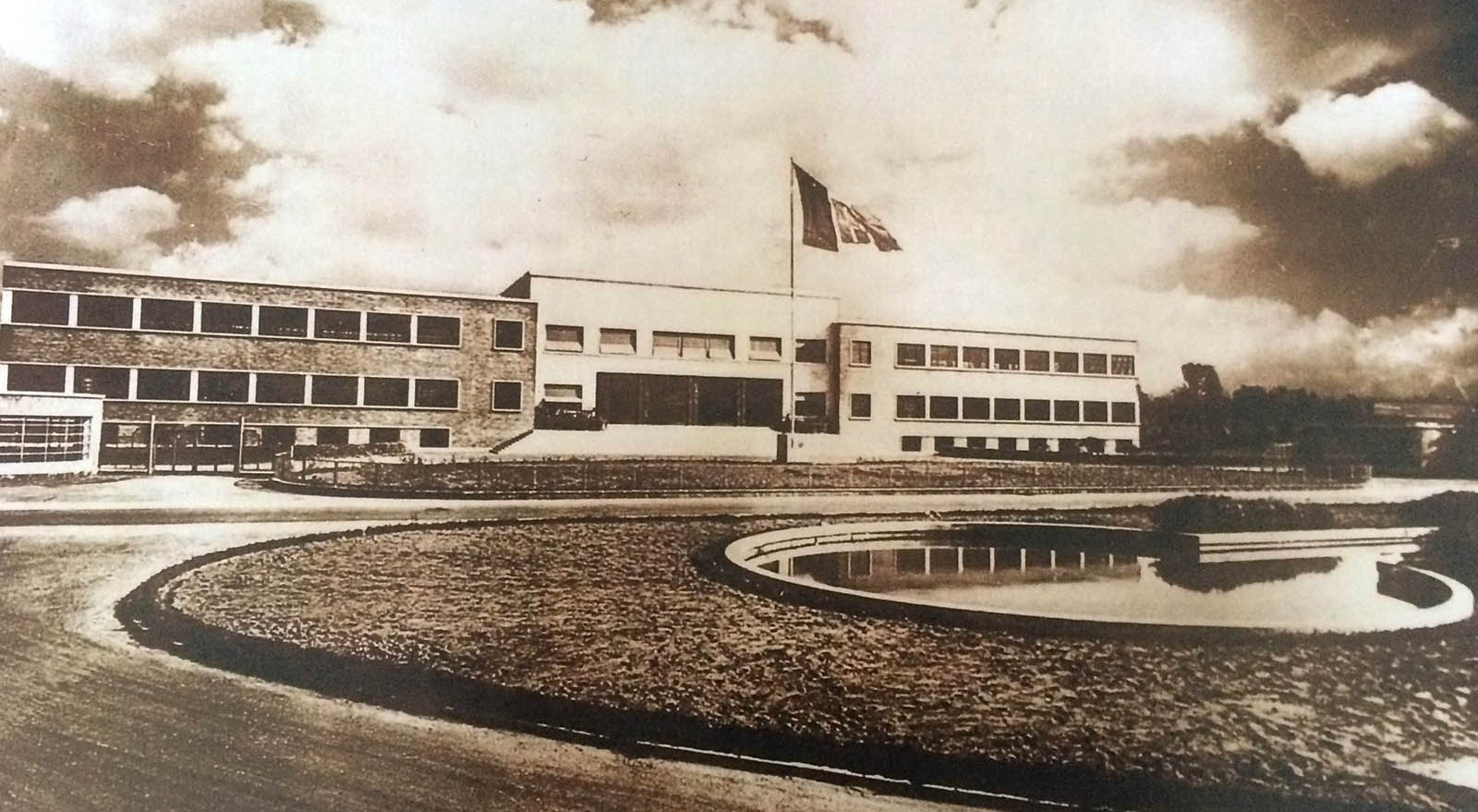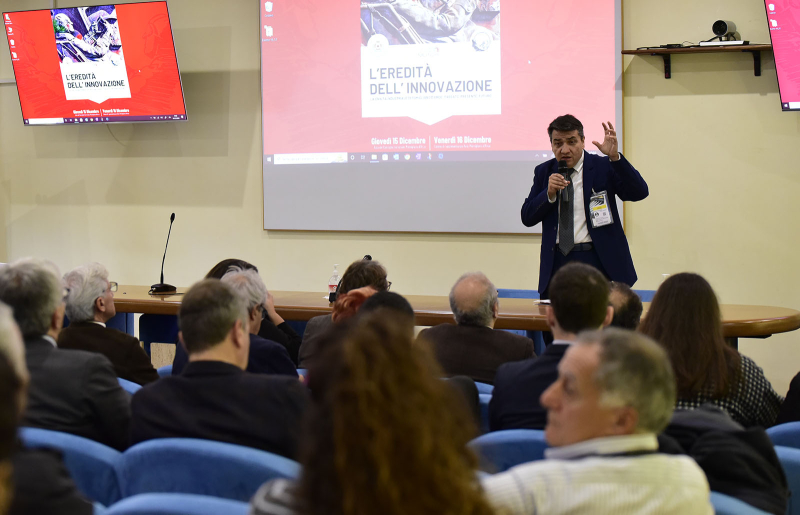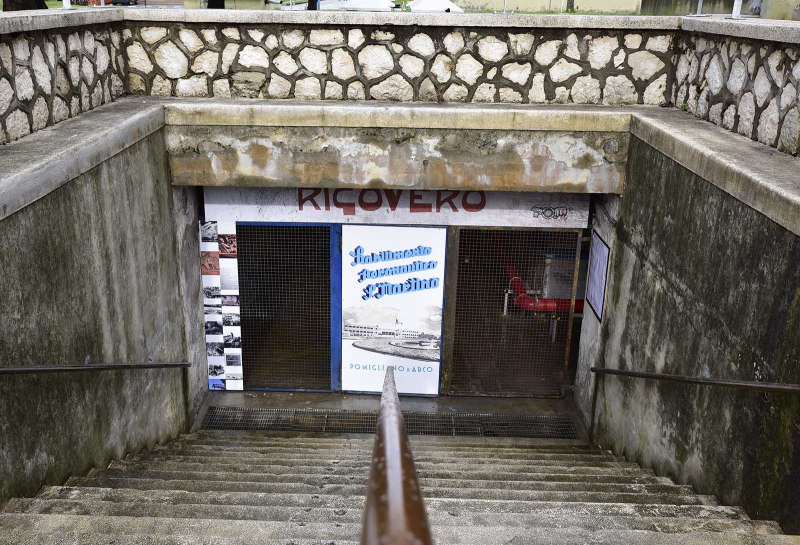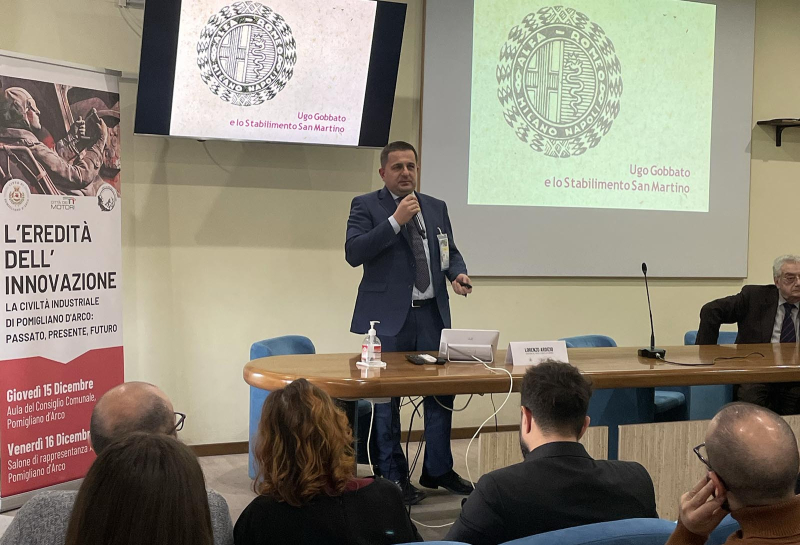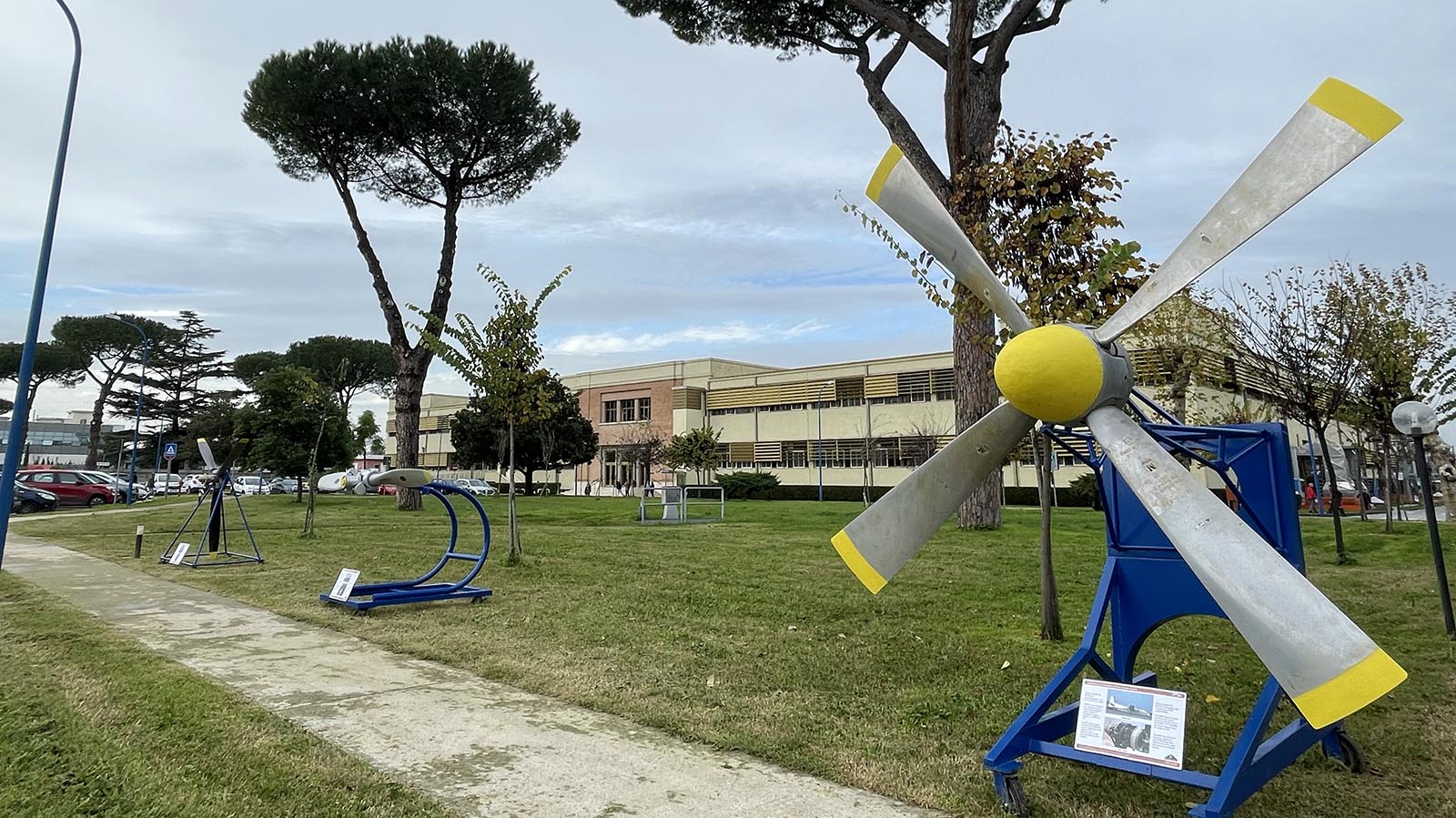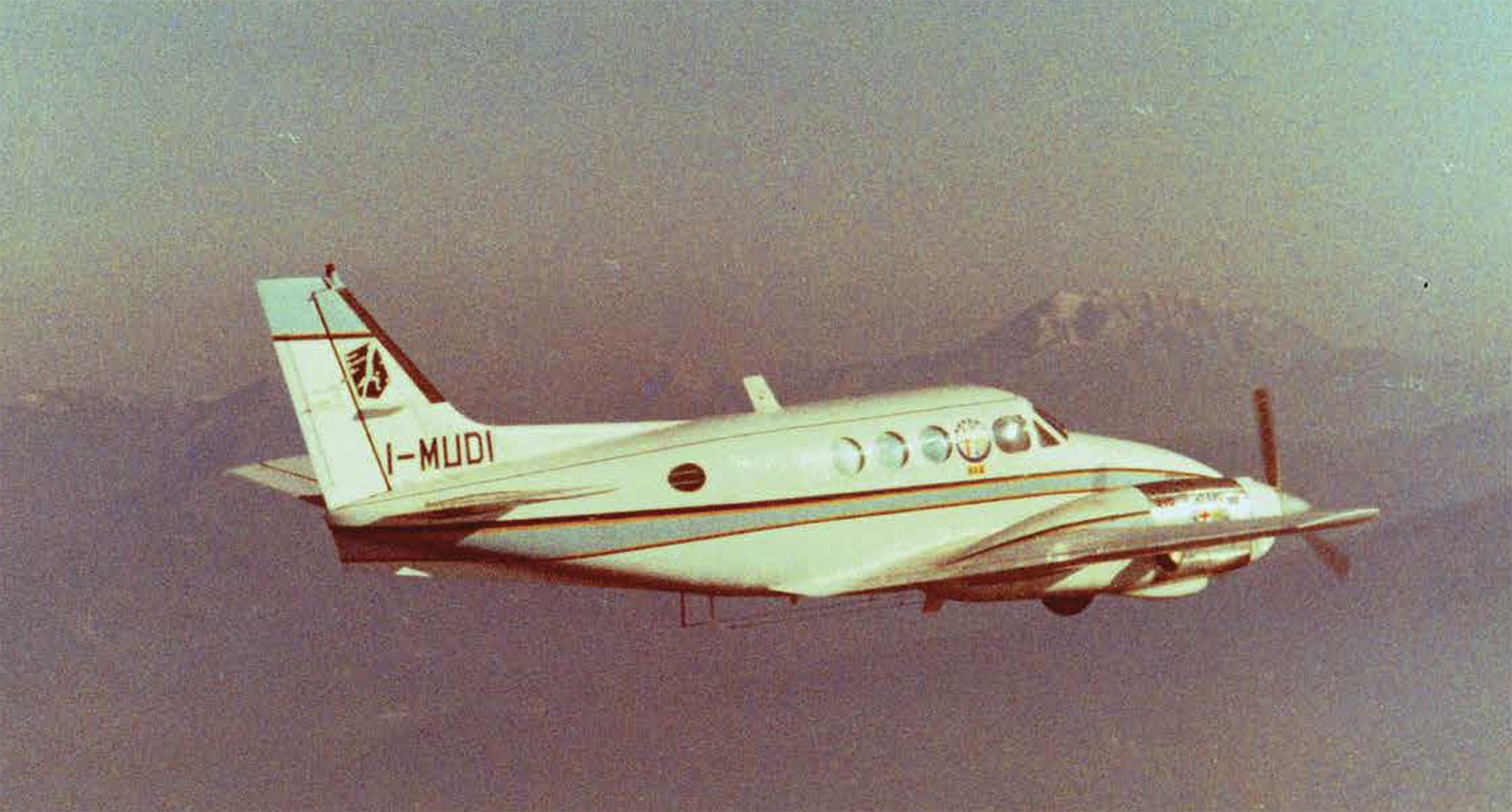Culture
The heritage of innovation
The journey through the memory of the Pomigliano site, thanks to the experience of its people, forms a bridge made of aeroengine expertise that unites yesterday’s avant-garde with today’s excellence.
Dec 2022
2023 promises to be an exciting year for Italy’s aviation world and enthusiasts. In addition to the hundredth anniversary of the Air Force, which Avio Aero is official sponsoring, the new year will also see a path of historical rediscovery and appreciation for the industrial memory of one of the territories dearest to the company, where technology and unique skills are rooted.
Pomigliano d'Arco (the municipality a few kilometers from Naples) has kicked off a historical review in collaboration with Avio Aero Pomigliano and other major aircraft companies and industries in the area (such as Leonardo and Stellantis) that will lead to the realization of a long-nurtured dream: the MIM - Museo dell’Industria del Motore (Museum of Industry and Engines)
"The idea arose in 2018, around the celebrations for the 80th anniversary of our Pomigliano plant (originally called the San Martino plant)," says Vincenzo Vegnente, Environment Health & Safety Leader at Avio Aero Pomigliano, who nurtures a great historiographical passion marked by his a 35-year career with the company. "I consulted the archives at the Alfa Romeo Museum in Arese to trace the history of our plant through many historical finds."
The San Martino Plant, now known as Avio Aero Pomigliano d'Arco, was built in April 1939 Until 1996 (when it was acquired by the then Avio), it bore the Alfa Romeo Avio brand name, writing legendary chapters in the Italian aeronautics industry. Aware of this, the municipality of Pomigliano with Mayor Gianluca Del Mastro - a museum-lover and philologist by education - formed a historical-scientific committee in 2021 involving Gioacchino Ficano, Operations Leader at Avio Aero in charge of the Pomigliano site for a long time, and Professor Aniello Cimitile, professor emeritus of the University of Sannio (author of the book “Sopra le Macerie").
"Pomigliano's history is a history of engines, its industrial life has been pivotal over the last century, and its citizens have always felt the presence of this strong connection and of the industrial transformation itself over the decades," says Mayor Del Mastro. He also spoke of sentiment to be passed on to new generations so that "industries are not perceived as foreign bodies, but rather as an integral part of the community. The museum we have in mind will link the community, its culture, and the industries with their development and future perspective."
Two days, December 15 and 16, marked the beginning of the project with two important conferences: one held in the City Council Hall on the first day (with representatives from the industries in the various sectors involved), and the other hosted in the "Romeo" auditorium at Avio Aero Pomigliano the next day.
In addition to the mayor and Prof. Cimitile, the Dec. 16 event was attended by high-level experts and local institutions: Alfa Romeo Museum Curator Lorenzo Ardizio, the architects Rosa Vitanza and Carola Coppo, Campania Regional Councilor for Productive Activities Antonio Marchiello, Campania Regional Council Vice President Valeria Ciarambino and international museum expert Nadia Barrella who spoke during the discussion and in support of the initiative.
"There is a sentiment to be passed on to new generations so that "industries are not perceived as foreign bodies, but rather as an integral part of the community"
"The second day was in fact the inauguration of a journey of rediscovering history, with awards given to the best project ideas presented for the museum," Vegnente says. "At this stage, we are analyzing the period from 1939 to 1944. This summer, we will review the 1945-1952 period when Aerfer was founded, and then we will work up to the present day in four successive steps. And then we will launch ourselves into the future."
Pomigliano’s history tells the story of the construction and evolution of the largest industrial hub in southern Italy: from the first postwar period and throughout the Second World War (during which the plant suffered a terrible bombing in May 1943), automotive production settled in the territory alongside the aeronautical production with important related train and trolley production.
The historical heritage consists not only of buildings, engines, machines, and manufacturing heritage but also of artistic representations of the working world, such as the metopes (terracotta tiles representing the trades of the aviation industry) and an impressive network of underground tunnels and galleries that branch out almost 10 km. These tunnels house air-raid shelters and link factory departments with the city center and even other factories. "We want to promote this infrastructure and host dedicated exhibitions within. To date, we have mapped about 3.5 km under the plant," Vegnente says.
Astonishment, ahead of such heritage, is apparent even in those who, like Lorenzo Ardizio, have made museum culture their profession. "Aircraft engines are on display as soon as you enter the Alfa Romeo Historical Museum in Arese. This is because they formed the company’s backbone from the early 1930s until the end of World War II, continuing in the following decades. They are certainly a central and fundamental part of our museum."
Like other illustrious European or American car or motorcycle brands, Alfa Romeo's DNA has been strongly influenced by aeronautics: "in technology, mentality, processes, as well as in the pursuit of quality (quite different, as far as flying is concerned). All this is very much emphasized in our museum. Before we talk about cars, we talk about aircraft engines: the first aircraft engine was born together with the first car in 1910, an inseparable link," says Ardizio.
“Today, it is good to see the brilliance and success of Avio Aero, which carries with it the environmental and architectural legacy of these buildings. And to see an uncommon sensitivity to this heritage, which is social, cultural, and technical besides being industrial," added Ardizio after listening to the speeches of his Pomigliano colleagues.
"Aircraft engines are on display as soon as you enter the Alfa Romeo Historical Museum in Arese. This is because they formed the company’s backbone from the early 1930s until the end of World War II, continuing in the following decades"
In particular, Michele Barbato, Service Area Leader of Avio Aero Pomigliano, and Gianni Mainiero, Lean Manufacturing Engineer, spoke during the auditorium conference. Barbato pointed out that, from the beginning, the plant was a place where aircraft engines were produced (under license from major 1930s brands such as De Havilland and Daimler Benz), maintained and tested.
"Passion and feeling - that's what we breathed during these two days. I'm sure the relationship and integration we've seen over the years with other major neighboring industries will benefit the museum’s success," Barbato told the auditorium.
At the same time, Mainiero offered a fascinating review of the start of production at the then San Martino Plant, which played a crucial role when Mussolini-led Italy was increasing its military capability. Mainiero cited the AR 110, AR 115, and the RA 1000 RC 41 ‘Monsone' engine, saying that "the birth and growth of the plant in those challenging times resulted in the development of a strong sense of belonging. In particular, the engine overhaul work that required precision, accuracy, and a great deal of manual labor bequeathed the attention and care still felt in the Pomigliano workshops today."
Four, six, or twelve cylinder and, of course, propeller-driven engines, which at the time essentially equipped military training and liaison aircraft, demonstrated a certain avant-garde movement as well as excellent performance: the RA 1000 RC41 developed 1159 hp at takeoff and delivered 1050 hp at an altitude of 4100 m. It powered the Macchi 202 and Reggiane 2001, which became the top fighters of what was then the Regia Aeronautica until 1943.
After the Second World War and the reconstruction of nearly 2/3 of the plant bombs had destroyed, the Pomigliano site resumed the production of the AR110 and 115 around 1948. They collaborated with major players such as Pratt & Whitney, Rolls-Royce, and GE, adding new models such as the AR131 and several other first-generation jet engines.
Over the years, the maximum capability was reached with the certification of the AR 318, which enabled Alfa Romeo Avio to become the first Italian company to independently design, develop and build a turboprop aircraft engine, which was then installed on a Beechcraft King Air for flight testing.
“The AR318 was a key player in the birth and growth of design in Pomigliano and may suggest a curious analogy with our Catalyst," Mainiero says. "If you will, Catalyst fits in as a bridge between the experiences of the past and the excellence we represent today."
The first Italian turboprop was certified in 1985. The company had different industrial plans at that time and was totally absorbed in the commercial boom of cars. But we all know history is a magistra vitae. That is why, quoting Joachim Ficano's speech in the City Council Hall, "it allows us to understand the present and launch ourselves into the future."
"The great work we have carried out in recent months with Mayor Del Mastro and Professor Cimitile, whom I thank again for their passion and for sharing their wisdom, allows us to rewrite the history of our territory through our industrial memory. A path that strengthens our connection with this land and that I believe is the legacy of innovation, a gift that we can give back to the community."
Ph. Credits Silvano Caiazzo, and Avio Aero / Fiat historical archive.



